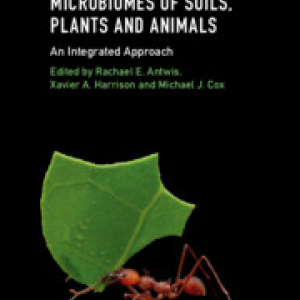
This book examines how communities of microorganisms (microbiomes) affect their multicellular hosts, including soil, plant, animal and human hosts. It discusses how microbiomes affect the behaviour, nutrition and disease susceptibility of their hosts.
Publisher’s summary
Through a long history of co-evolution, multicellular organisms form a complex of host cells plus many associated microorganism species. Consisting of algae, bacteria, archaea, fungi, protists and viruses, and collectively referred to as the microbiome, these microorganisms contribute to a range of important functions in their hosts, from nutrition, to behaviour and disease susceptibility. In this book, a diverse and international group of active researchers outline how multicellular organisms have become reliant on their microbiomes to function, and explore this vital interdependence across the breadth of soil, plant, animal and human hosts. They draw parallels and contrasts across hosts in different environments, and discuss how this invisible microbial ecosystem influences everything from the food we eat, to our health, to the correct functioning of ecosystems we depend on. This insightful read also pertinently encourages students and researchers in microbial ecology, ecology, and microbiology to consider how this interdependence may be key to mitigating environmental changes and developing microbial biotechnology to improve life on Earth.
Reference
Antwis, R. E., Harrison, X. A. and Cox, M. J. (2020). Microbiomes of Soils, Plants and Animals: An Integrated Approach. Cambridge University Press, Cambridge.
Read more here. See also the Foodsource chapter How are food systems, diets, and health connected?







Post a new comment »